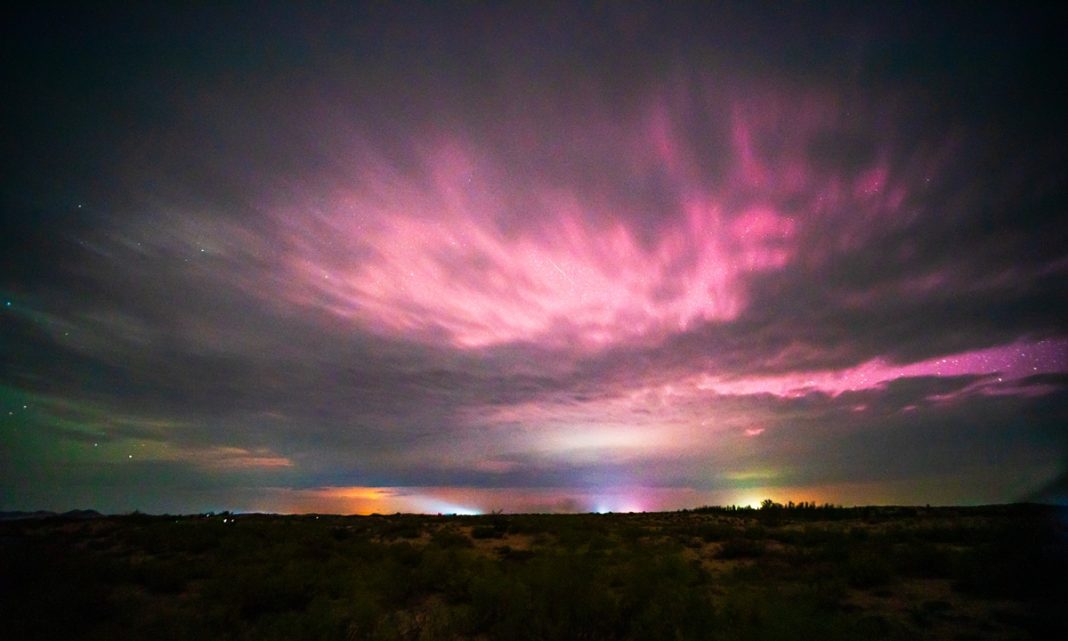BEIJING: From Northwest China’s Xinjiang Uygur Autonomous Region to Northeast China’s Heilongjiang Province, multiple northern regions across China are among the best destinations to enjoy the stunning beauty of the aurora – a breathtaking gift brought by the strongest geomagnetic storm in two decades, which attracts visitors and photographers to rush for the mesmerizing display by the nature.
The Earth’s magnetic field experienced a massive geomagnetic storm (kp=9) on the night of Friday to the early hours of Saturday, due to a coronal mass ejection event from the sun. At 9:32 am on Saturday, the National Space Weather Monitoring and Early Warning Center under the China Meteorological Administration issued a red alert for geomagnetic storms, predicting moderate to high solar activity levels in the next three days, with the possibility of M-class or even X-class flares, leading to small to large geomagnetic storms, and even severe geomagnetic storms.
Regions such as Altay in Xinjiang, Mohe in Heilongjiang, and North China’s Inner Mongolia Autonomous Region were hotspots for tourists and photography enthusiasts eager to witness this natural wonder.
The night sky in Altay, located in the northern Xinjiang, was adorned with colorful auroras, creating a mesmerizing spectacle for people who gazed upon it.
As a response, Altay decided to temporarily adjust the nighttime lighting of all its buildings to allow residents and tourists to better enjoy the aurora nightscapes. The adjustment period was be from midnight on Saturday until the early morning of Sunday.
Local tourism departments and businesses tailored services for tourists interested in viewing the auroras at night. Discounts were offered at various observation lodges in Altay, such as multiple inns, to provide affordable and convenient accommodations for visitors.
The unique geographical location and climatic conditions of Xinjiang play a significant role in the formation of vibrant auroras during geomagnetic storms. Xinjiang’s dry climate, high atmospheric transparency and special magnetic field distribution create favorable conditions for the interaction of charged particles with atmospheric molecules and atoms, resulting in more pronounced light phenomena, according to experts.
Interestingly, the phenomenon of the northern lights even extended as far as Beijing on Saturday. A student from a Beijing-based university told the Global Times on Sunday that he embarked on a six-hour journey to the mountains of Miyun district on the night of Saturday to capture a dazzling aurora display. This was his first time witnessing the auroras, and he was amazed to experience such a natural wonder at a latitude of 40 degrees north. –The Daily Mail-Global Times news exchange item






